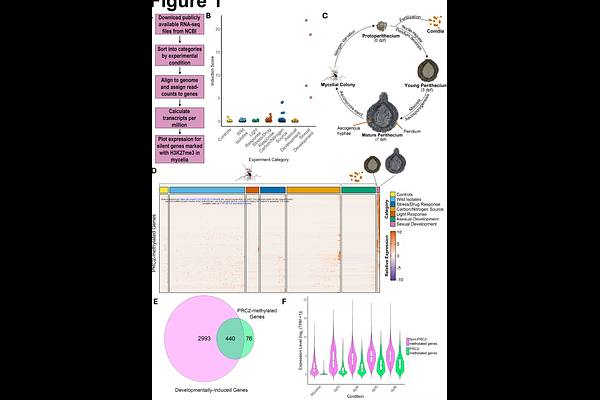Polycomb repressive complex 2 regulates sexual development in Neurospora crassa

Polycomb repressive complex 2 regulates sexual development in Neurospora crassa
Deaven, A. M.; Ameri-Solanky, A. J.; Lewis, Z. A.
AbstractIn most branches of the fungal kingdom, sexual development marks a dramatic shift from simple multicellular hyphae to complex fruiting bodies composed of multiple tissues and cell types. It is essential to tightly regulate development to prevent unnecessary energy investment into building these structures. Polycomb Repressive Complex 2 (PRC2) is a highly conserved regulator of development in multicellular organisms. In plants, animals, and some fungi, PRC2 tri-methylates histone H3 lysine 27 in promoters and gene bodies to repress gene expression. In Neurospora crassa, H3K27me3-associated genes are poorly conserved and stably repressed in standard lab conditions. Through analysis of publicly available RNA-seq experiments, we found that PRC2-methylated genes are broadly and uniquely activated during sexual development. PRC2-methylated genes comprise a distinct subset of developmentally induced genes (DIGs) characterized by an exceptionally high degree of cell-type specificity. Loss of PRC2 activity results in the precocious formation of perithecia-like structures (dubbed false perithecia), even in the absence of a compatible mating-type partner. These structures show a unique gene expression profile with activation of both PRC2-methylated and unmethylated DIGs, showing evidence of a transcriptional reprogramming event. Together, these data suggest that PRC2 is part of a developmental checkpoint that restricts fruiting body development to the appropriate conditions.